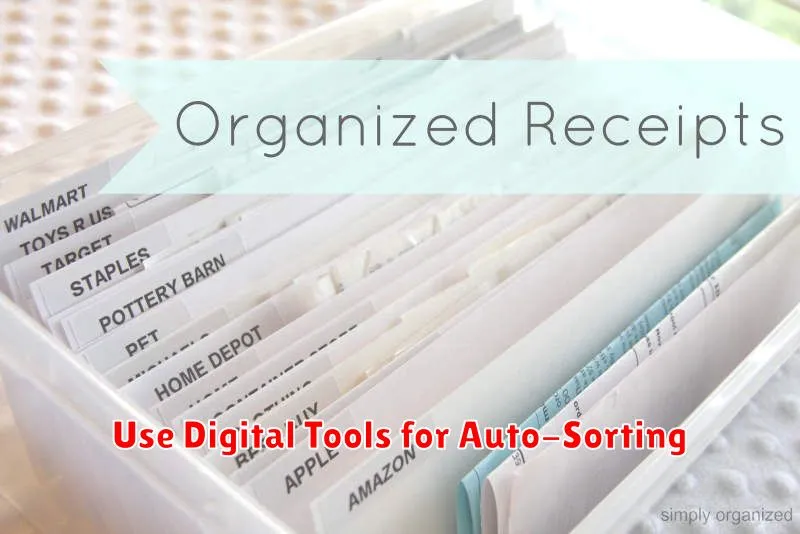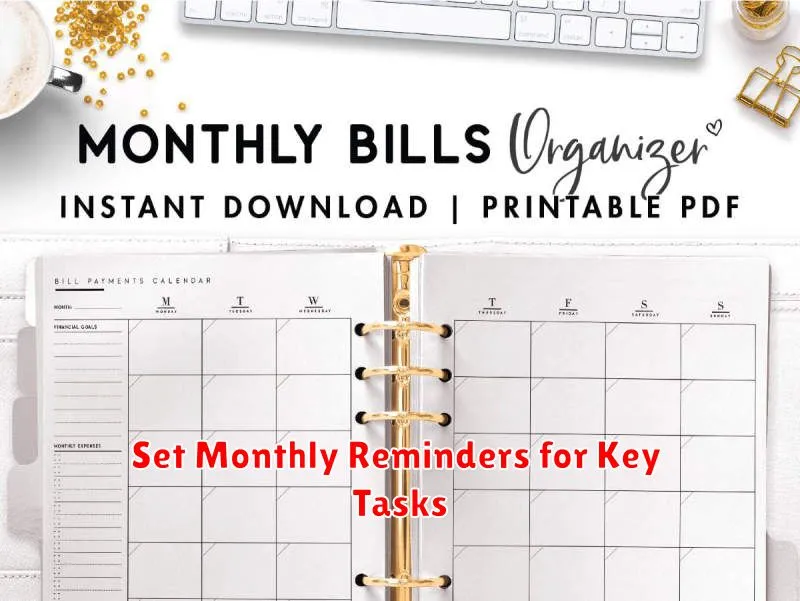Are you struggling to manage your finances? Do you feel overwhelmed by bills, debt, and a lack of financial clarity? This comprehensive guide, “How to Keep Your Financial Life Organized All Year Long,” provides practical strategies and actionable steps to help you gain control of your personal finances, budget effectively, and achieve your financial goals. Learn how to simplify your financial life, reduce stress, and build a strong financial future with our expert advice. Discover the secrets to effective financial planning and finally achieve financial peace of mind.
Create a Folder System for Statements and Receipts
A well-organized folder system is crucial for managing your financial documents. This system should be both physical and digital for optimal efficiency.
For your physical files, consider using a filing cabinet or expandable file folders. Categorize your folders by year and then by type of document (e.g., “2023 – Bank Statements,” “2023 – Tax Documents,” “2023 – Receipts – Home Improvement”). Keep receipts organized by vendor or category for easy retrieval.
For digital files, create a similar folder structure on your computer or cloud storage. Scan all important documents and store them electronically. Using a cloud-based system allows for easy access from multiple devices and offers added security. Properly naming files (e.g., “20231027_BankOfAmericaStatement.pdf”) is vital for easy searching and retrieval.
Regularly review and purge your files. Keep only what is necessary for tax purposes or other important financial record-keeping. Shred documents containing sensitive information before discarding them to prevent identity theft.
Use Digital Tools for Auto-Sorting

Staying organized with your finances requires a systematic approach. Digital tools offer a powerful solution for automating the sorting and categorization of your financial data. Instead of manually filing receipts and statements, leverage the capabilities of budgeting apps and financial management software.
Many applications offer automatic import features for bank transactions and credit card statements. This auto-categorization saves significant time and effort, reducing the chances of misplacing important documents or overlooking critical financial information. Features like automatic bill payment reminders and spending analysis tools further enhance the organization and provide valuable insights into your financial habits.
By employing these digital tools, you can establish a centralized, readily accessible record of your financial life, making tax preparation, budgeting, and financial planning significantly easier and more efficient. Choosing the right software tailored to your needs is crucial for maximizing the benefits of this automated system.
Label Documents by Month and Type
Organizing your financial documents is crucial for efficient budgeting and tax preparation. A simple yet effective method is to label each document by month and type. This allows for quick retrieval and minimizes the time spent searching for specific information.
For example, label your bank statements as “Bank Statement – January 2024,” or your credit card bills as “Credit Card Bill – February 2024.” Similarly, categorize tax documents as “Tax Document – 1099 – March 2024” or “Tax Document – W-2 – March 2024“. This detailed labeling ensures clear identification and prevents confusion.
Consistent labeling will streamline your financial record-keeping. Consider using a consistent filing system, either physical or digital, to maintain organization. This structured approach saves time and reduces stress when managing your finances throughout the year.
Set Monthly Reminders for Key Tasks

Maintaining a well-organized financial life requires consistent attention. Setting monthly reminders for key tasks is crucial for staying on top of your finances throughout the year. This proactive approach prevents unexpected issues and allows for better financial planning.
Consider setting reminders for tasks such as reviewing your budget. This allows you to identify areas where you might be overspending or undersaving and make necessary adjustments. Another important reminder should be for checking your credit report. Monitoring your credit score helps you detect and address any potential problems early.
Furthermore, paying bills on time is paramount to avoid late fees and maintain a good credit history. Schedule reminders for major bills to ensure timely payment. You can also set reminders for reviewing investment performance and contributing to retirement accounts to ensure you’re on track towards your financial goals.
Utilizing digital calendars, reminder apps, or even a simple paper planner can greatly assist in managing these monthly reminders. The key is to choose a system that works best for you and ensures that these vital financial tasks don’t get overlooked. Consistent attention through regular reminders helps streamline your financial life and reduces stress.
Review Subscriptions and Recurring Charges Quarterly
Regularly reviewing your subscriptions and recurring charges is crucial for maintaining a healthy financial life. A quarterly review allows you to identify and eliminate unnecessary expenses before they accumulate. This proactive approach helps you stay on top of your budget and avoid unexpected financial surprises.
To conduct an effective review, gather all your statements and bills. Categorize your recurring charges (streaming services, gym memberships, software subscriptions, etc.). Carefully examine each expense. Ask yourself: Is this still providing value? Can I find a cheaper alternative? Is the service still being used?
Cancel any unwanted or unused subscriptions immediately. Consider negotiating lower rates with providers, especially for services you value and use frequently. Document your changes for future reference and integrate these updates into your budgeting system.
This quarterly check-in is a simple yet powerful tool for maintaining financial control. It ensures that your spending aligns with your goals and helps you save money throughout the year.
Keep Your Financial Goals Visible and Updated
Maintaining a clear view of your financial objectives is crucial for staying organized throughout the year. Visibility ensures consistent motivation and progress tracking. Consider using a visual aid such as a whiteboard, a dedicated notebook, or a digital spreadsheet to list your goals with specific targets and deadlines.
Regular updates are equally vital. Schedule time—weekly or monthly—to review your progress, noting achievements and addressing any roadblocks. This proactive approach prevents your goals from becoming stagnant and helps you adapt your strategy as needed. Adjusting your plan based on your actual performance ensures you stay on track towards your long-term financial aspirations.
Integrating your financial goals with your daily or weekly schedule is also recommended. For instance, setting reminders or allocating specific time slots for reviewing your finances or actively working towards achieving a goal can significantly enhance your commitment and overall success.
Declutter Outdated Accounts and Tools
A crucial step in organizing your financial life is decluttering outdated accounts and tools. This involves identifying and closing any inactive bank accounts, dormant investment accounts, or unused credit cards. These accounts can accumulate unnecessary fees and complicate your financial overview.
Similarly, review your financial software and apps. Are you still using outdated budgeting tools or payment platforms? Switching to more efficient and user-friendly options can streamline your financial management. Unsubscribe from any unnecessary financial newsletters or email alerts to reduce clutter in your inbox.
Remember to securely dispose of any sensitive documents related to closed accounts, ensuring your personal information remains protected. This proactive approach to decluttering will not only simplify your financial life, but also enhance your security and potentially save you money in the long run.

